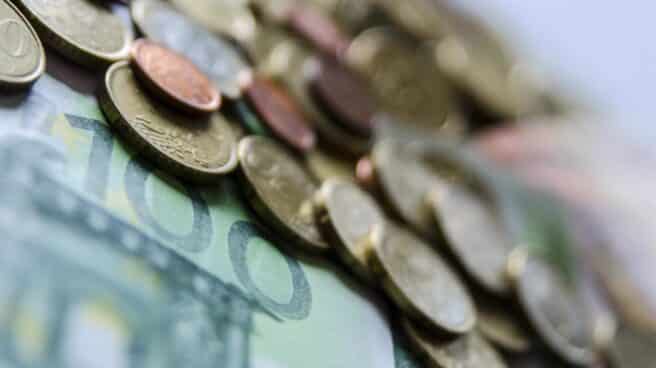

Cash
The European Central Bank’s (ECB) rate hikes are already starting to show up in Spaniards’ savings. According to the consulting company Álvarez & Marsal, so far Spanish banks have transferred only 10% of the rate hike to deposits. But big banks have not yet begun to reward their customers’ savings. CaixaBank decided to pounce in September and this caused the average interest rate on deposits to rise to its highest level in eleven years.
According to Bank of Spain data for October, lThe average yield on 12-month deposits was 2.45%. To see this kind of interest, you have to go back to December 2012, when it was 2.96%; in January 2013 the percentage dropped to 2.43%, a level similar to the current one. At that time, interest rates were 0.75% and the deposit rate was 0%. Currently rates are 4.5% and the latest are 4%. Therefore, it was expected that this remuneration on deposits would be higher.
The explanation for why it was not fully transferred is that the growth was very rapid. In just one year, the ECB raised the rate from 0% to 4.5%. Banks, for their part, argue that there is a lot of liquidity in the market and there is no need to attract more money from clients. Moreover, they take refuge in the fact that when the single supervisor cut deposit rates below zero, they did not charge customers for their money, although they did charge companies.
October data shows that banks are no longer passing rate hikes only to loans that The average mortgage interest rate remained at 3.86%. but this is already observed in the sediments. Héctor Grisi, CEO of Banco Santander, has made clear in several speeches that non-repayment of deposits is helping to keep down the prices of mortgages and loans. That is, he linked cheaper mortgages to non-rewarding customers’ savings.
But CaixaBank has already delved into the issue of remuneration on deposits and launched one for 12 months with a remuneration of 2%, but with conditions. Everyone gets 1%, but to get the maximum reward, the client must send wages, take out home, life or health insurance, an alarm or a pension product. BBVA has also jumped on the bandwagon of rewarding savings, but in an even more exclusive way.
The organization, chaired by Carlos Torres, launched a deposit for its retail clients with a reward of 2.75%. However, this deposit is not available from the bank’s website, that is, it is not for all clients, since depending on the profile and connection, the same 2.75% is offered. Apart from these two large banks, the rest have not yet moved their proposal. But Banco Santander, for example, offers deposits through its digital bank Openbank.
“The profitability of Spanish deposits has increased by 500% in a year,” say experts at financial comparator HelpMyCash.com, who also highlight that this increase occurred despite the fact that not all banks passed on the rate hike to their customers at the same rate. In addition, they highlight that it was mid-sized and digital banks that led the growth.
Currently Spanish companies with the most profitable deposits EBN, Pibank, Banca March, Self Bank, Banco Caminos, Cajamar, MyInvestor, Miraltabank and Caixa Guissona. They all sell deposits with a maturity of one year and interest rates ranging from 3% to 3.35% per annum, and they are all protected by the Spanish Deposit Guarantee Fund (FGD).
In any case, the noticeable increase in deposit yields in our country lags behind the indicators of the rest of the eurozone countries. Spanish banks are sixth from bottom. They pay 30% less than, for example, the Italians and the French, according to the European regulator. “It is for this reason that we maintain the importance of opening up the possibility of attracting deposits from other neighboring countries. Now is not the time to leave your savings unpaid. You should take advantage of high returns with minimal risk,” they say from HelpMyCash. And, in addition, deposits from Italy or France, for example, have the support of the Deposit Guarantee Fund, for greater security for the depositor.
Source: El Independiente